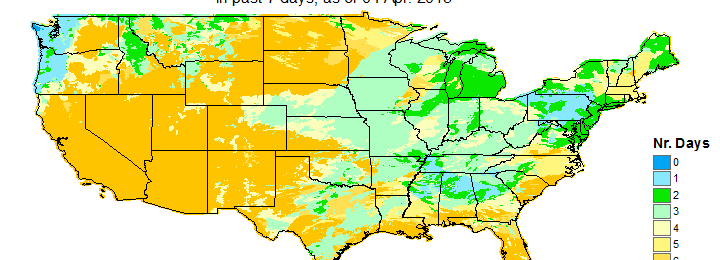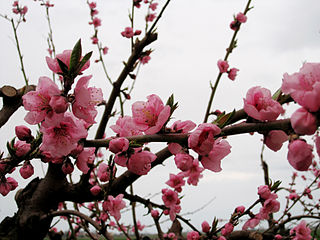-

Here are a couple of sites that you might find useful in looking at current conditions across the United States. The two maps below show the departure from average greenness across the United States from the US Forest Service. You can find these maps at https://www.wfas.net/index.php/avhrr-ndvi-moisture–drought-47. They show satellite-derived vegetation status across the country. These particular…
-

Last week I attended the Waste to Worth conference in Seattle, a meeting filled with useful information on a variety of topics related to managing livestock and animal waste under expanding regulations and increasingly variable climate. Our sister blog posted an entry on some of the things that were being discussed at the W2W meeting.…
-

The Associated Press ran an article this weekend describing some of the damage to peach crops in central Georgia from the cold snap in late March. Jeff Cook, the Extension agent in Peach and Taylor Counties, noted that roughly a third of the peaches in 10,000 acres may have been lost due to the cold…
-

Where were you on April 3-4, 1974? I was living in Grand Rapids, MI at the time. We heard the stories there of the terrible tornado outbreak that affected a wide area of the eastern US, including areas of the Southeast. My church sent workers to help in the cleanup of the devastation at Xenia,…
-

If you live in any of the counties below in northeast Georgia, your help is needed for a University of Georgia study on wind and wind-related damage. Participation is easy–use your computer to fill out a 20-30 minute survey on wind damage in your area and your opinions of several severe weather conditions. In return…
Posted in: Events -

The 7-day QPF for this coming week shows a continuation of the split pattern we have seen over the last couple of weeks. Wet conditions should continue to occur in northern parts of the Southeast, while southern areas, especially southern Florida, will see lower than normal rainfall. This may increase the extent of abnormally dry…
-

March 2015 was warmer and drier than normal for most of Georgia. While the warmth helped encourage rapid growth of planted corn and other crops, cold conditions late in the month may have caused some damage to fruit blossoms. The warm and dry conditions also increased soil moisture shortages across the region. In Atlanta, the…
Posted in: Climate summaries